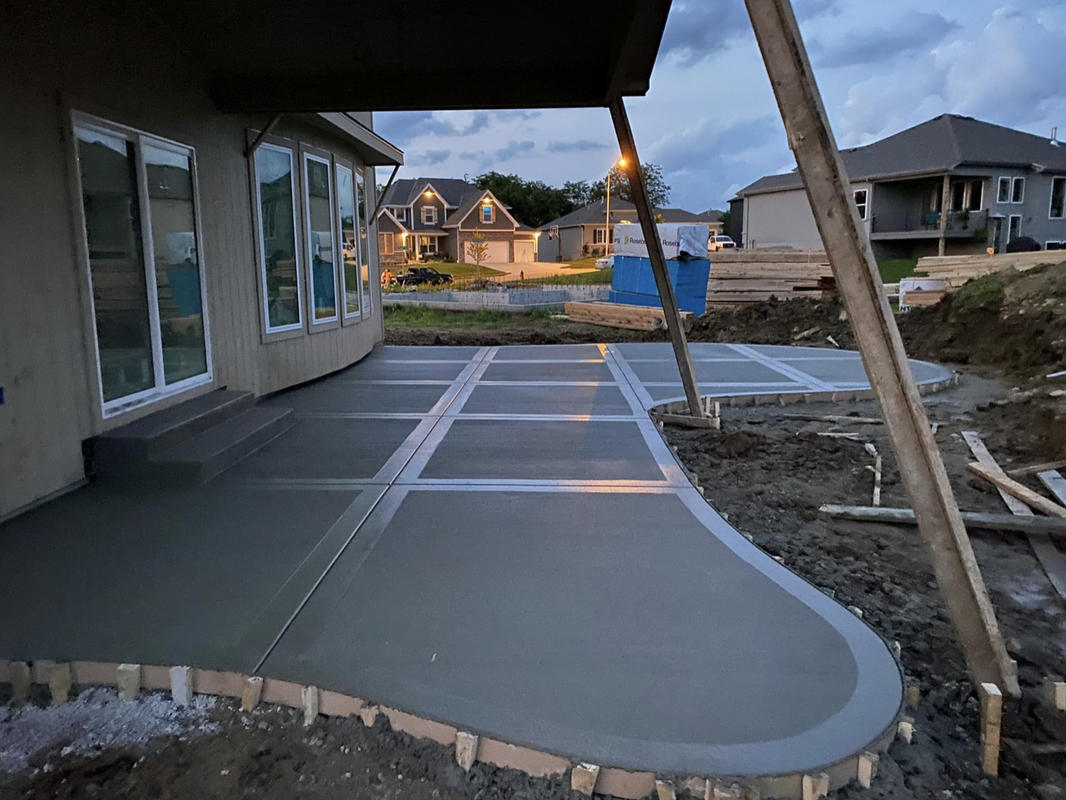Accomplishing Sustainability and Longevity With Eco-Friendly Concrete Building Solutions for Your Project
The integration of environment-friendly materials and lasting building and construction approaches holds the pledge of promoting longevity in projects while mitigating adverse environmental impacts. By checking out innovative environment-friendly concrete construction solutions, a harmonious equilibrium between sturdiness, sustainability, and ecological responsibility can be accomplished.
Advantages of Eco-Friendly Concrete
The benefits of making use of green concrete in building projects expand past environmental advantages to include cost-effectiveness and resilience. Additionally, this kind of concrete can contribute to getting eco-friendly structure accreditations, which can boost the bankability and worth of a building job.

Lasting Building And Construction Practices
Having actually developed the benefits of environmentally friendly concrete in building projects, the emphasis currently moves towards sustainable construction techniques that better improve environmental stewardship and long-lasting practicality in the structure sector. Sustainable construction techniques entail the combination of environmentally pleasant techniques throughout the entire structure process, from layout to demolition. This includes utilizing recycled products, enhancing energy efficiency, lowering waste generation, and promoting the well-being of both the setting and passengers.
One trick aspect of lasting building is the incorporation of eco-friendly energy resources like solar panels and geothermal furnace to minimize reliance on typical energy grids. In addition, carrying out green structure certifications such as LEED (Management in Power and Environmental Design) or BREEAM (Building Study Facility Environmental Analysis Approach) can help make sure that tasks meet strict sustainability requirements.
In addition, lasting building methods focus on water preservation via the usage of efficient plumbing components and rainwater harvesting systems. By adopting these eco-conscious methods, building jobs can dramatically decrease their ecological impact while promoting a more resilient and lasting constructed setting for future generations.

Durability Via Green Materials
Using long lasting environment-friendly products in construction projects is crucial for ensuring the longevity and sustainability of buildings. Green materials are those that have a decreased effect on the atmosphere throughout their life cycle, from extraction to use, production, and disposal. One key aspect of green products is their resilience, which directly adds to the long life of a structure. By choosing high-quality, sturdy green products, building and construction tasks can reduce the requirement for constant repairs and substitutes, therefore extending the life-span of the building.
Products such as recycled steel, reclaimed wood, bamboo, and recycled glass are examples of eco-friendly materials that supply both resilience and sustainability benefits. These materials not only add to the durability of a building however likewise assist minimize its carbon impact. Furthermore, eco-friendly products usually need less maintenance and upkeep, further enhancing the longevity of the framework.
Including environment-friendly products into construction projects is a proactive technique towards accomplishing sustainability and long-term viability in the built atmosphere - concrete contractors near me. By prioritizing resilience and ecological duty, designers and home builders can develop structures that stand the examination of time while lessening their ecological influence
Environmental Impact Decrease
Tactically implementing eco-conscious methods can considerably he said minimize the environmental effect of concrete construction jobs. By focusing on sustainable sourcing of raw products, such as using recycled aggregates and supplementary cementitious materials like fly ash or slag, the carbon impact of concrete manufacturing can be decreased. Furthermore, maximizing the mix design to lower cement material while preserving efficiency standards helps reduce greenhouse gas exhausts linked with concrete production.
During building, decreasing waste generation through efficient project planning and utilizing advanced techniques like prefabrication can better decrease the ecological influence. Including approaches for water preservation, such as on-site water reusing systems and absorptive sidewalks, helps in reducing water intake and drainage air pollution (concrete contractors near me). In their explanation addition, applying energy-efficient techniques in concrete treating and building devices operation can add to reducing general energy usage and connected discharges
Eco-Friendly Solutions for Projects
Executing environment-friendly services in construction tasks is critical for decreasing environmental influence and promoting sustainability. From the layout stage to the materials made use of, there are different methods to incorporate green methods right into building tasks. One effective strategy is to prioritize making use of sustainable materials, such as recycled concrete accumulations or reclaimed timber, which can help in reducing the carbon footprint of the project. In addition, utilizing energy-efficient modern technologies like solar panels or geothermal heating unit can better improve the eco-friendliness of the construction procedure.
An additional essential aspect of environment-friendly building and construction solutions is waste administration. Applying reusing programs on-site and guaranteeing appropriate disposal of building and construction waste can considerably lessen the ecological influence of a project. Moreover, designing buildings with effective water administration systems, such as rainwater harvesting or greywater recycling, can contribute to saving this useful source.
Verdict
To conclude, taking on green concrete building services provides various advantages for tasks, consisting of sustainability, longevity, and reduced ecological impact. By including environment-friendly materials and lasting methods, home building projects can add to a more ecologically friendly and lasting future. It is vital for firms and individuals in the construction sector to focus on green solutions to help alleviate the adverse impacts of conventional building techniques on the atmosphere.
The benefits of utilizing environmentally friendly concrete in building jobs extend beyond ecological benefits to incorporate cost-effectiveness and durability. By choosing eco-friendly concrete, building and construction tasks can attain sustainability goals without jeopardizing on quality or efficiency.
Having established the advantages of environment-friendly concrete in building jobs, the focus now shifts in the direction of lasting building and construction techniques that better boost ecological stewardship and long-lasting practicality in the building industry.In conclusion, taking on environment-friendly concrete building solutions offers many benefits for tasks, including sustainability, durability, and decreased ecological effect (concrete contractors near me). It is essential for firms and individuals in the building and construction sector to prioritize green solutions to assist mitigate the unfavorable impacts of standard construction techniques on the atmosphere